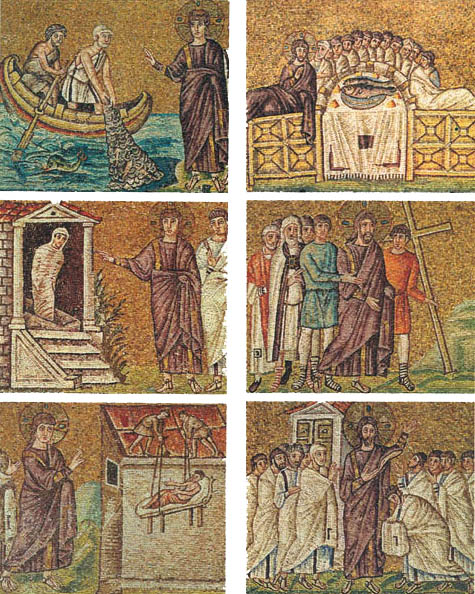Image Details

Scala/Art Resource, NY
From miracle worker to savior. Along the upper walls of the Church of Sant’Apollinare Nuovo in Ravenna, 26 small mosaic panels (including the six shown here) make up the earliest series of monumental images recounting Jesus’ life story. Dating to the early sixth century, the mosaics along the northern wall show Jesus teaching and performing miracles; they include the calling of Saints Peter and Andrew, with their net full of fishes (top left), the resurrection of Lazarus (middle left) and the healing of the paralytic who was lowered through the roof of a Capernaum house to obtain a cure (bottom left). In each, Jesus is unbearded, fair-skinned and youthful. Produced at the same time by the same workshop, the mosaics on the south wall of the church depict Jesus’ last days—including the apostles reclining with Jesus at the Last Supper (top right), the road to Calvary, with Simon of Cyrene carrying the cross (middle right), and the resurrected Jesus displaying his wounds to his apostles, including Thomas who bows before him (bottom right). Here Jesus appears older, darker and bearded.
For Jensen, it is no coincidence that the change in Jesus is first visible in the Last Supper mosaic. For at this meal Jesus announces that he has finally come into his full glory (John 13). According to Jensen, the two portrait types illustrate this transformation in Jesus’ divinity—from miracle worker to glorified savior-god.
